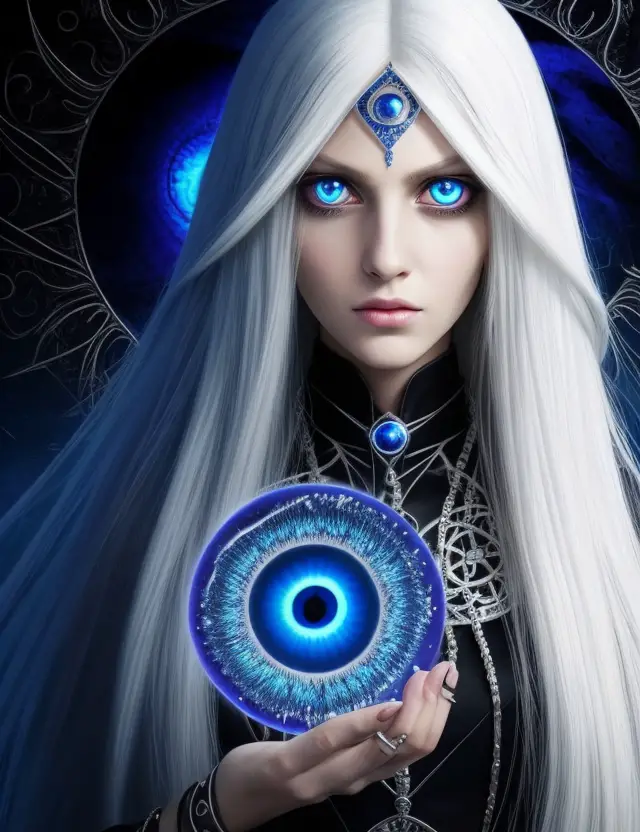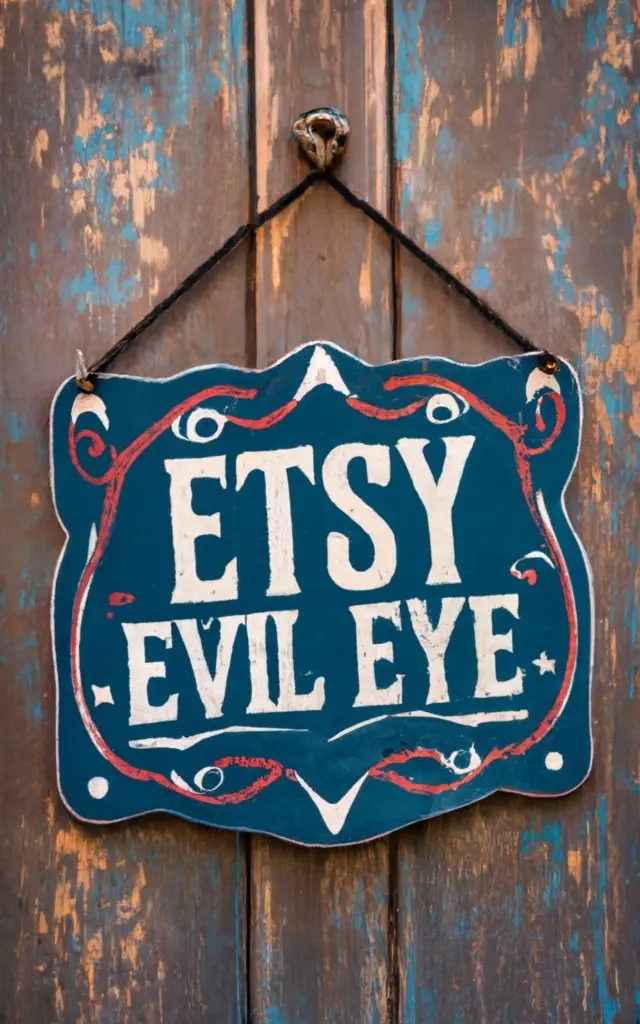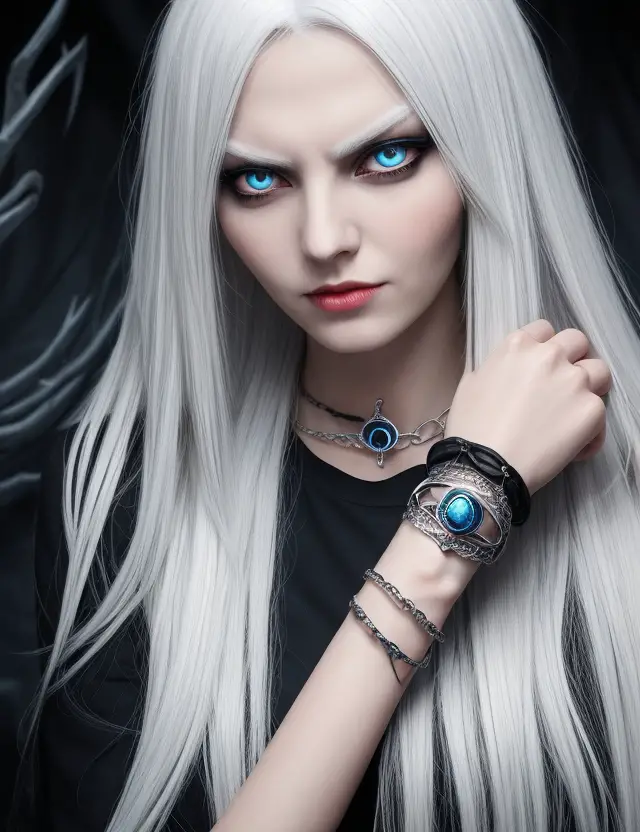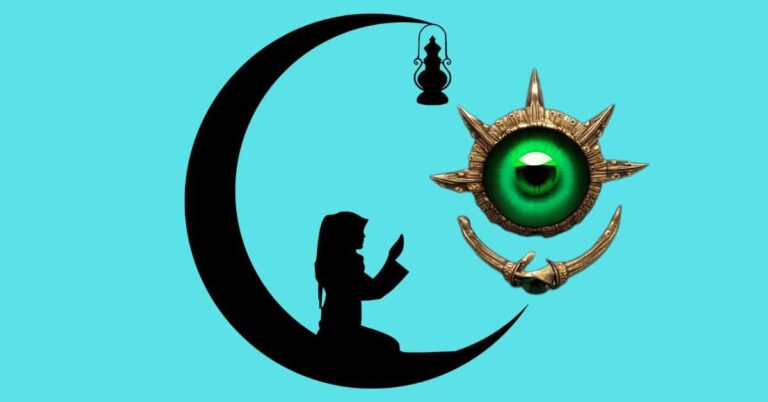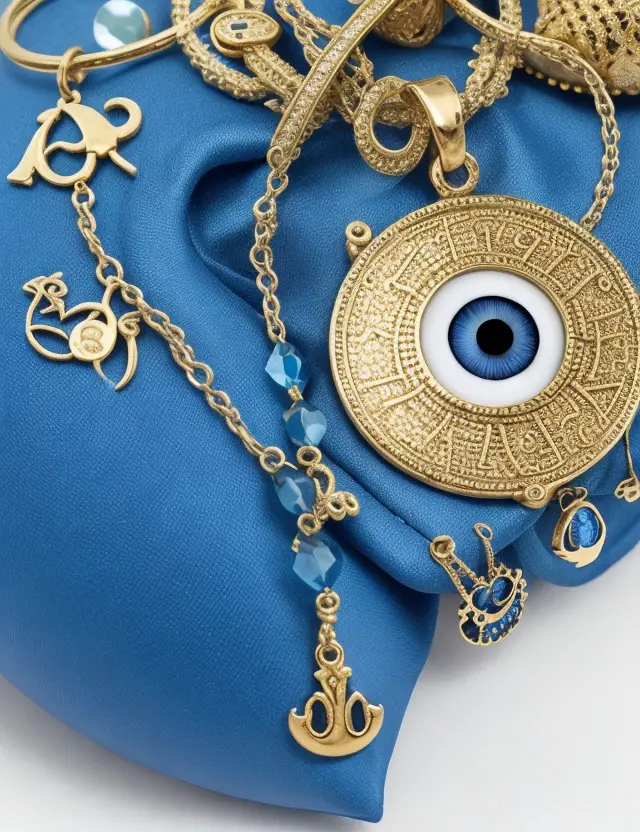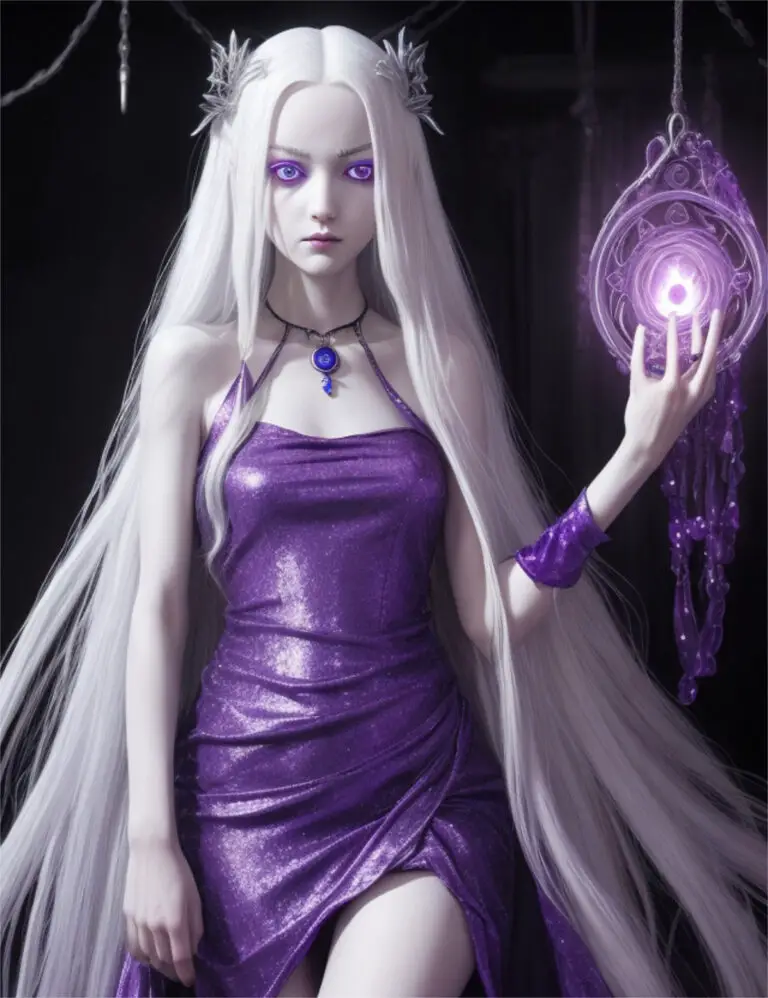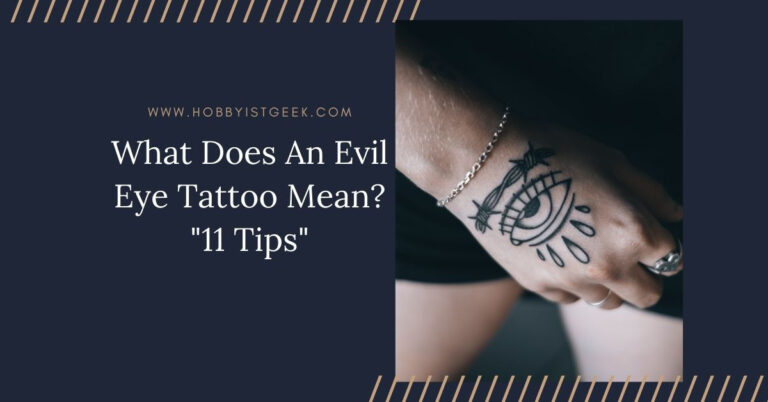Evil Eye vs. Other Protective Symbols: A Comparative Study
Introduction
Evil Eye vs. Other Protective Symbols Welcome, dear readers, to a fascinating exploration of the enigmatic realm of amulets and talismans. Today, we delve into a captivating topic that has intrigued humanity for centuries – the Evil Eye and its counterparts in the realm of protective symbols. Brace yourselves for a journey through ancient beliefs, cultural practices, and the intriguing power these symbols hold.
Definition and Significance of the Evil Eye
The Evil Eye is an age-old concept deeply rooted in various cultures across the globe. This malevolent force is believed to cause harm or misfortune to those unfortunate souls who catch its gaze. The concept of the Evil Eye finds its origins in ancient civilizations such as Mesopotamia, Greece, and the Middle East.
But what makes this symbol so significant? Well, it lies in its universal acknowledgment.
For centuries, people have sought protection from its ill effects by employing various talismans or charms designed to ward off this dreaded gaze. Whether it’s a belief in supernatural powers or simply cultural superstitions passed down through generations – one thing is certain: The Evil Eye holds great sway over our collective imagination.
Overview of Other Protective Symbols
Beyond the omnipresent Evil Eye, there exists an expansive assortment of other protective symbols that have captivated mankind throughout history. These symbols vary greatly depending on cultural traditions but share a common purpose: safeguarding individuals from harm.
The Hamsa Hand is one such emblem widely revered for its protective properties in Middle Eastern cultures. With an intricate design featuring an open right hand often embellished with mystical motifs or gems, it symbolizes strength against evil forces.
In Turkey, another noteworthy symbol known as Nazar Boncuk takes center stage. Often crafted as vibrant blue glass beads with concentric circles resembling an eye, this talisman is believed to repel the Evil Eye and bring good fortune to its wearer.
Further east, in the mystic lands of Tibet, the Dzi bead holds great significance. These ancient agate beads, adorned with intricate patterns and symbolic motifs, are thought to protect against negative energies and bestow blessings upon their owners.
In Mexico, the Ojo de Dios (Eye of God) symbolizes divine protection. Crafted from colorful yarns meticulously woven into a mesmerizing pattern resembling an eye at its core, it is believed to watch over households and shield them from harm.
These are just a few examples of the myriad protective symbols that have captivated cultures worldwide. Now that we have laid the groundwork for our journey through these enchanting symbols, let us delve deeper into their captivating tales and explore their efficacy in shielding us from evil forces.
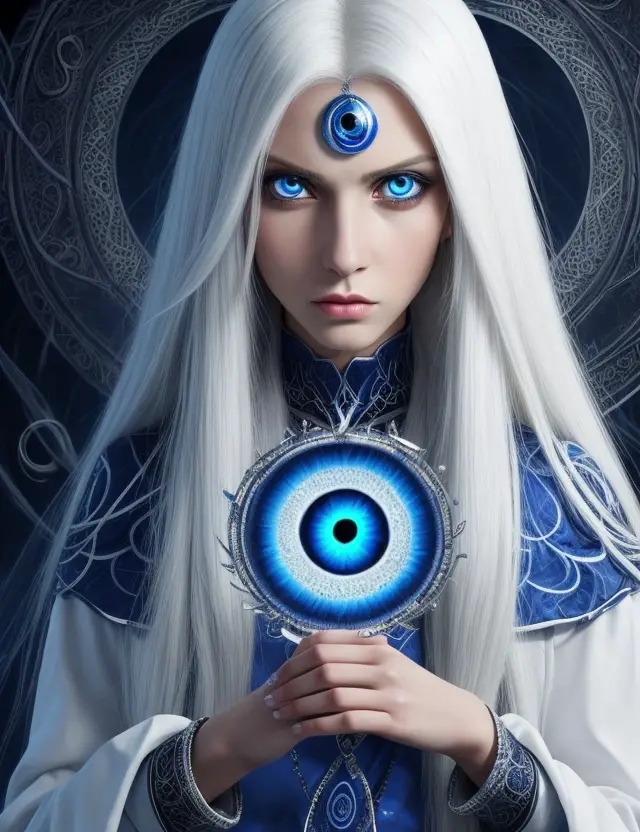
The Evil Eye: Origins and Beliefs
Ancient Origins in Different Cultures
The concept of the Evil Eye dates back thousands of years and can be traced to various ancient civilizations. Mesopotamia, known as the cradle of civilization, is one such culture where belief in the Evil Eye was prevalent.
The Mesopotamians believed that certain individuals possessed a malevolent gaze that could bring harm or misfortune to others. Similarly, in ancient Greece, the concept of the Evil Eye was deeply ingrained in their mythology and folklore.
They believed that envious gods or mortals had the power to cast curses through their eyes. Moving eastwards, we find the Middle East as another region where belief in the Evil Eye has deep roots.
In countries like Turkey, Iran, and Egypt, this belief continues to hold strong even today. These cultures believe that jealousy and envy can manifest as a physical curse through one’s eyes.
Common Beliefs Surrounding the Evil Eye’s Malevolent Power
The Evil Eye is commonly believed to possess malevolent power capable of causing harm or misfortune to its victims. People who are said to possess this evil gaze are often assumed to have envious intentions or harbor negative emotions towards others. This belief cuts across cultures and religions.
In many communities across different continents, it is often thought that when someone gives you an intense look filled with envy or jealousy, they may inadvertently project negative energy onto you through their eyes. This energy can then affect your well-being by causing illness, accidents, financial troubles, or other forms of calamity.
Cultural Practices to Ward Off the Evil Eye
To protect themselves from the perceived dangers associated with the Evil Eye, various cultures practice rituals or employ protective measures. These practices are meant to ward off evil spirits or deflect negative energy projected by others. One common practice is the use of amulets or talismans believed to repel the Evil Eye’s effects.
These amulets can take different forms, such as the nazar boncuk in Turkey, a blue bead with an eye-like design that is believed to absorb and deflect negative energy. Other cultures may use charms, hand gestures like the hamsa hand in the Middle East, or even specific prayers or incantations.
In addition to personal protective measures, some communities may have cultural norms and customs to prevent jealousy or envy from taking hold. For example, it is common in various cultures to avoid bragging excessively about one’s success or possessions to mitigate attracting envious gazes that could potentially invite the Evil Eye’s curse.
The origins and beliefs surrounding the Evil Eye are diverse and fascinating. Understanding its historical significance and how different societies perceive its power provides valuable insight into human superstitions and cultural practices aimed at protection against perceived malevolent forces.
Comparative Analysis: Evil Eye vs. Other Protective Symbols
Symbolic representation and visual characteristics of the Evil Eye
When examining the Evil Eye and its symbolism, it becomes apparent that the eye itself holds a universal significance across various cultures and religions. Throughout history, the eye has been regarded as a potent symbol, representing perception, intuition, and divine protection. It serves as a gateway to the soul and reflects our innermost thoughts and intentions.
The Evil Eye, in particular, is believed to possess malevolent powers capable of inflicting harm or misfortune upon others. One intriguing aspect of the Evil Eye is its multitude of representations in different cultures.
While commonly associated with an eye-shaped design incorporating vibrant shades of blue, variations in depiction exist. Some cultures believe in red-eyed evil gazes or even multi-colored eyes to convey different degrees of intensity or potential danger.
Other protective symbols from different cultures and traditions
In addition to the Evil Eye’s prevalence across cultures, numerous other symbols have emerged as powerful protective talismans. For instance, we have the Hamsa Hand originating from Middle Eastern traditions.
This amulet is shaped like a hand with an eye placed strategically at its center. It encapsulates similar protective qualities to ward off evil forces.
The Nazar Boncuk from Turkey is another notable symbol employed for protection against malevolence. Its fascinating blue glass design resembles a human eye encircled by intricate patterns that emanate calming energy while deflecting negative influences.
Traveling towards Tibet, we encounter the Dzi bead—a highly revered amulet traditionally crafted from agate stone adorned with intricate patterns resembling mystical eyes. These beads are considered sacred objects possessing positive energy capable of safeguarding against ill intentions.
Journeying to Mexico introduces us to Ojo de Dios (“Eye of God”). Rooted in native indigenous traditions, this symbol consists of a wooden cross adorned with vibrant yarn intricately woven in a radial pattern resembling an eye.
It is believed to represent divine protection and ward off negative energies. The Evil Eye stands as a universally recognized symbol, its variations in depiction adding depth to its cultural significance.
Meanwhile, other protective symbols like the Hamsa Hand, Nazar Boncuk, Dzi bead, and Ojo de Dios offer diverse interpretations of the eye’s protective qualities within specific cultural contexts. These symbols exemplify humanity’s shared belief in the power of visual representation as a means of safeguarding against malevolent forces.
Efficacy and Cultural Significance
The Power of the Evil Eye as a Protective Symbol
The Evil Eye has long been regarded as a potent symbol of protection against malevolent forces. Its effectiveness as a talisman is deeply rooted in cultural beliefs and superstitions across various regions. While scientific explanations may attempt to debunk its powers, the pervasive belief in its efficacy cannot be dismissed easily.
Unraveling the Science Behind its Perceived Powers
Scientists have endeavored to demystify the phenomenon surrounding the Evil Eye, attributing it to psychological and physiological factors. One theory suggests that the perception of “evil” or negative energy transmitted through eye contact can trigger feelings of unease or discomfort in others, leading to a self-fulfilling prophecy. Another explanation delves into the concept of mirror neurons, proposing that our brains involuntarily mimic emotions displayed by others, thus allowing potential negative energy to affect us.
Personal Anecdotes and Cultural Beliefs on Effectiveness
Beyond scientific reasoning, personal anecdotes shed light on cultural beliefs that reinforce faith in the protective power of the Evil Eye. Countless stories abound about individuals who claim to have felt its impact firsthand—instances where they experienced misfortune after being subjected to an envious gaze. These tales serve as cautionary reminders and perpetuate the belief that certain people possess an innate ability to cast an evil gaze.
Comparative Analysis: Other Protective Symbols’ Efficacy
Cultural Contexts Influencing Belief in Power
The effectiveness attributed to various protective symbols is influenced by cultural contexts specific to each symbol’s origin. For example, in Middle Eastern cultures, where Hamsa Hand amulets are prevalent, beliefs regarding their protective capabilities are deeply ingrained.
Similarly, Tibetan culture places great importance on Dzi beads, with each bead possessing unique protective qualities believed to ward off evil spirits. The cultural significance assigned to these symbols affects people’s perception of their efficacy.
Examples of Rituals or Practices Associated with Each Symbol
Rituals and practices associated with different protective symbols further reinforce their perceived efficacy. In Turkey, the Nazar Boncuk is often hung in homes, cars, or worn as jewelry to deflect the Evil Eye’s negative influence.
Similarly, Mexicans create Ojo de Dios (God’s Eyes) using yarn and sticks as offerings for protection and good fortune. These rituals not only serve as acts of faith but also provide a sense of comfort and security to those who believe in their power.
The Quest for Protection: A Multifaceted Approach
While the Evil Eye remains widely recognized as a powerful symbol of protection, it is crucial to acknowledge that multiple symbols can coexist harmoniously. People may resort to using a combination of various talismans based on personal beliefs and cultural traditions.
This multifaceted approach reflects humanity’s overarching desire for security amidst an unpredictable world. The perceived effectiveness of the Evil Eye as a protective symbol cannot be solely attributed to scientific explanations or personal anecdotes but rests upon deep-rooted cultural beliefs.
Comparative analysis allows us to appreciate the diversity of protective symbols and rituals across cultures while recognizing their shared objective: offering solace and safeguarding against negative energies that may seek to thwart our well-being. Whether one places faith in the Evil Eye or other protective symbols, they stand testament to humanity’s age-old quest for protection against malevolence—a journey woven intricately with culture, belief systems, and our collective longing for peace of mind.
Lesser-Known Facts about These Symbols
The Evil Eye has captured the imagination of people throughout history, leading to intriguing tales and historical anecdotes. One such story centers around Emperor Nero of Rome, who was believed to possess the Evil Eye. It was said that his intense gaze alone could bring misfortune upon anyone unfortunate enough to be on the receiving end.
This belief led to countless individuals fearing his presence and taking extreme measures to avoid eye contact with him. Another fascinating anecdote comes from ancient Greece, where it was believed that certain individuals were born with a “gift” for casting the Evil Eye.
One such individual was known as Bellerophon, a hero known for taming Pegasus, the winged horse. However, despite his heroic deeds, Bellerophon’s fame came with a price – he was regarded as having an evil gaze capable of causing harm wherever he looked.
Famous instances where individuals were believed to possess an evil gaze
Throughout history, there have been numerous notable figures associated with possessing an evil gaze. One prominent example is Rasputin, the enigmatic Russian mystic and advisor to Tsar Nicholas II and Alexandra Romanov. Many believed that Rasputin’s piercing eyes held a malevolent power capable of influencing events and people around him.
This belief greatly contributed to his mysterious reputation and added fuel to rumors about his supposed ability to manipulate those in power. Another well-known figure associated with an evil gaze is Aleister Crowley, a British occultist from the late 19th century.
Crowley’s intense eyes were said to possess a hypnotic quality that unsettled those who encountered him. Such beliefs fueled speculation about his involvement in dark magic practices and further cemented his reputation as a controversial figure in esoteric circles.
Cultural superstitions surrounding specific body parts associated with casting an
In various cultures, certain body parts are believed to hold particular significance when it comes to casting the Evil Eye. For instance, in Mediterranean cultures, the left eye is often seen as the “dangerous” eye capable of bestowing misfortune.
Moreover, some superstitions suggest that individuals with naturally striking or captivating eyes are more likely to possess the Evil Eye. In contrast, other cultures associate different body parts with casting an evil gaze.
In parts of Africa and Asia, for example, people believe that envy and malicious intentions can be projected through the index finger. Thus, pointing directly at someone with this finger is seen as potentially harmful or disrespectful.
Conclusion
While the concept of the Evil Eye and other protective symbols may seem mystical and exciting, it is important to approach them with a critical mindset. These symbols have deep historical and cultural roots that have shaped beliefs and practices around them.
Whether it’s tales of famous individuals possessing an evil gaze or cultural superstitions surrounding specific body parts associated with casting the Evil Eye, understanding these lesser-known facts adds layers of intrigue to our exploration. Ultimately, these symbols serve as reminders of our shared fascination with protection against malevolent forces.
While their efficacy may vary depending on personal beliefs and cultural contexts, they offer a sense of comfort in uncertain times. So whether you find solace in wearing a symbolic amulet or simply enjoy delving into folklore and history, exploring these small details reminds us of humanity’s enduring curiosity about the unseen world around us.
Frequently Asked Questions
- What is the Evil Eye, and how does it compare to other protective symbols in various cultures?
- The Evil Eye is a belief found in many cultures where a malevolent stare or gaze can bring misfortune. Protective symbols, on the other hand, are objects or signs believed to ward off negative energies. In our study, we compare the origins, cultural significance, and methods of protection associated with the Evil Eye and other symbols.
- Are there commonalities in the belief systems surrounding the Evil Eye and other protective symbols, or do they vary significantly?
- While there are some shared themes in the belief systems, the specifics often vary. Commonalities may include the idea of protection against harm, but the symbols used and the rituals associated with them can differ widely from one culture to another.
- Can you provide examples of protective symbols from different parts of the world, and how do they differ from the concept of the Evil Eye?
- Certainly. Examples of protective symbols include the Hamsa in the Middle East, the Nazar Boncuk in Turkey, and the Eye of Horus in ancient Egypt. These symbols, like the Evil Eye, aim to protect against negativity, but they often have different forms and cultural contexts.
- In your comparative study, did you find any cultural or historical factors that influence the prevalence and effectiveness of the Evil Eye and other protective symbols?
- Yes, we observed that the prevalence and effectiveness of these symbols are strongly influenced by historical events, cultural practices, and the local interpretations of spiritual beliefs. For instance, some cultures may have stronger taboos surrounding the Evil Eye, making its protection more vital.
- What are some practical ways people use these protective symbols in their daily lives, and do they genuinely believe in their protective powers?
- People use protective symbols in various ways, such as wearing them as jewelry, hanging them in their homes, or even using them in rituals. Belief in their protective powers varies, but in many cultures, these symbols are integrated into daily life as a means of protection against perceived threats and negative energies.
Unlock the Power of Evil Eye Protection!
Hobbyist Geek. Com
Explore HobbyistGeek.com today, where I’ve curated a wealth of articles covering everything you need to know about the Evil Eye.
Discover recommended materials, learn proper rituals, delve into color symbolism, and even find in-depth reviews of specific Evil Eye products to aid you in choosing the perfect one.
Strengthen your protection against the Evil Eye by visiting www.HobbyistGeek.com.
Don’t forget to sign up for our email list to stay updated with exclusive insights and offers.
Feel free to drop any questions you may have below – I’m here to guide your spiritual journey.
Unlock the Power of Evil Eye Protection!
Hobbyist Geek. Com
Explore HobbyistGeek.com today, where I’ve curated a wealth of articles covering everything you need to know about the Evil Eye.
Discover recommended materials, learn proper rituals, delve into color symbolism, and even find in-depth reviews of specific Evil Eye products to aid you in choosing the perfect one.
Strengthen your protection against the Evil Eye by visiting www.HobbyistGeek.com.
Don’t forget to sign up for our email list to stay updated with exclusive insights and offers.
Feel free to drop any questions you may have below – I’m here to guide your spiritual journey.
If you enjoyed this informative article I know you will love:
Is The Evil Eye Good Or Bad?: Explained
Evil Eye Bracelet Color Meaning: How Colors Influence Your Life!
Check out more information on Evil Eye!
- Jewelry Making Ideas: Seasonal Crystal Trends That Command Premium Prices - May 31, 2025
- Evil Eye Hand: Unveiling the Mystical Origins and Meanings - February 2, 2024
- Amegreen Amethyst Meaning: Discover the Hidden Magic! - February 2, 2024

